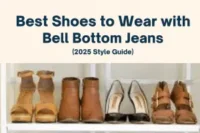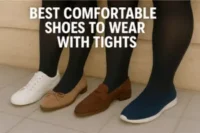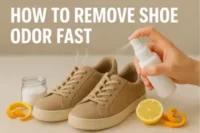Which Safety Shoes Are Best? Complete Buying Guide
Published: 12 Oct 2025
🥾 Why Safety Shoes Matter More Than You Think
Ever dropped something heavy on your foot or slipped on a wet floor at work? That painful moment is exactly why safety shoes are so important. Picking the right safety footwear is not only about comfort. It can protect you from injuries that could keep you off work for weeks.
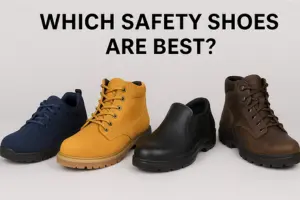
In this guide, you will learn:
- Why are safety shoes essential for every worker?
- The real dangers they protect you from.
- How to choose the best safety shoes for your job.
- What makes protective footwear truly effective?
Accidents happen in every industry, from construction to healthcare. Wearing the best safety shoes helps prevent injuries from falling tools, slippery floors, or electric shocks. Certified work boots with features like steel toe, anti-slip soles, or EH protection keep your feet safe, comfortable, and ready for any challenge.
Protecting your feet is not optional. It is a daily decision that keeps you safe and productive.
🏗️ Know Your Work Environment
Before buying any pair of safety shoes, stop and think about where you work each day. Your environment decides the kind of protective footwear you need. A construction worker and a nurse may both need safety shoes, but the features they rely on are completely different.
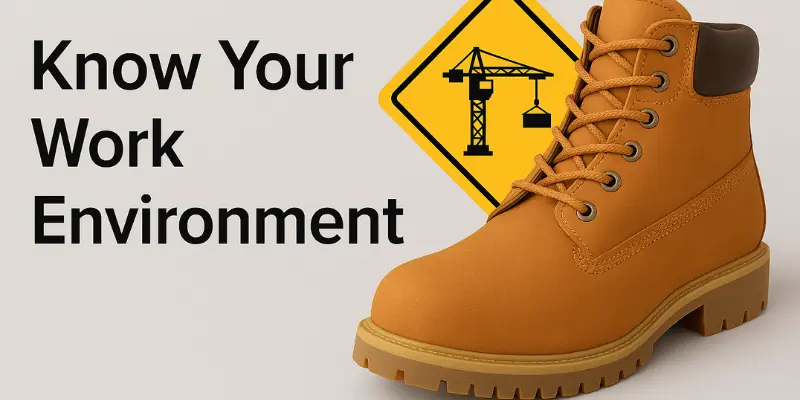
Here’s what to consider before you buy:
- Indoor or outdoor work: Outdoor jobs may require waterproof work boots, while indoor workers might prefer lightweight, breathable safety footwear.
- Type of surface: If your floor is often wet or oily, focus on anti-slip soles for better grip.
- Electrical or metal-free zones: Go for composite toe shoes that are non-metallic and EH-rated.
- Weight and comfort: Long hours on your feet need shoes that are cushioned and lightweight.
Every job site brings its own risks. Choosing the right safety shoes for your work setting helps you stay safe, avoid fatigue, and move confidently throughout the day. The wrong choice can slow you down, but the right pair can power you through any shift.
🧰 Key Safety Features to Look For
Not all safety shoes are created equal. Some just look tough, while others are built to actually protect your feet in tough conditions. To find the best safety shoes, you need to understand the features that matter most for your safety and comfort.
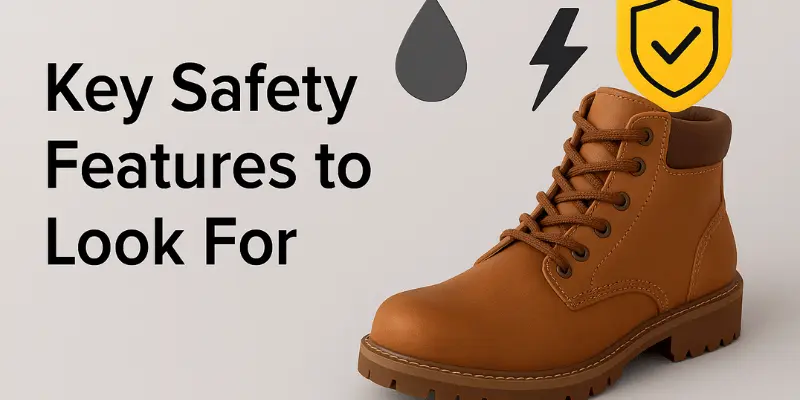
Look for these must-have features:
- Toe protection: Choose between steel toe, composite toe, or alloy toe. Steel offers strong impact resistance, while composite is lighter and ideal for metal-free zones.
- Slip resistance: A must if you work on wet, oily, or uneven surfaces.
- Puncture-resistant midsoles: Protect your feet from sharp tools or nails on the ground.
- Electrical hazard (EH) protection: Keeps you safe in high-voltage environments.
- Waterproofing and breathability: Stay dry in wet conditions and cool in hot ones.
The best work boots are more than just tough on the outside. They combine smart design with real protection where it counts. These features turn regular footwear into serious protective gear that works as hard as you do.
📋 Understanding Safety Footwear Ratings (EN ISO 20345 / ASTM F2413)
Safety shoes are not just about looks or brand names. What really matters are the safety standards they meet. These labels, such as EN ISO 20345 in Europe and ASTM F2413 in the United States, tell you exactly how much protection your safety footwear provides.
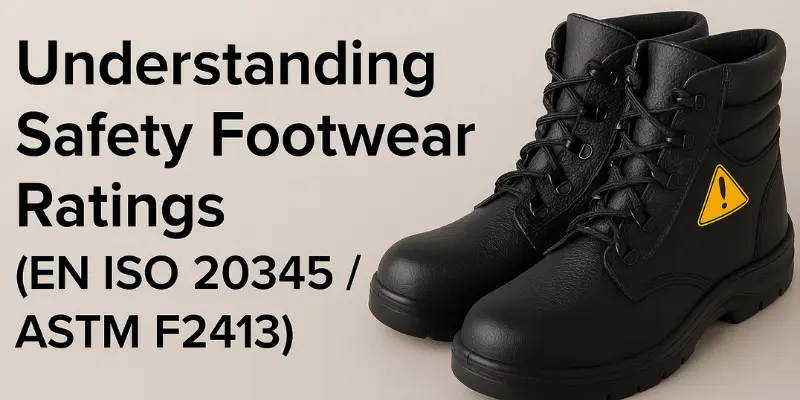
Here’s how to read the most common codes:
- S1: Basic toe protection with anti-static and energy absorption.
- S2: Adds water resistance.
- S3: Includes everything in S2 plus a puncture-resistant midsole.
- SR: Stands for slip resistance on wet or oily floors.
- EH (ASTM): Protects against electrical hazards.
If you see these codes on a pair of work boots or composite toe shoes, that means they’ve passed tests for safety and performance.
Understanding these ratings helps you avoid guesswork and buy the right safety shoes for your job. The better the match, the better your feet are protected.
👟 Fit and Comfort: The Make-or-Break Factor
Even the toughest safety shoes are useless if they hurt your feet. Comfort is not a luxury. It is a key part of staying productive and safe at work. When your feet feel good, you can focus, move better, and stay on your feet longer.
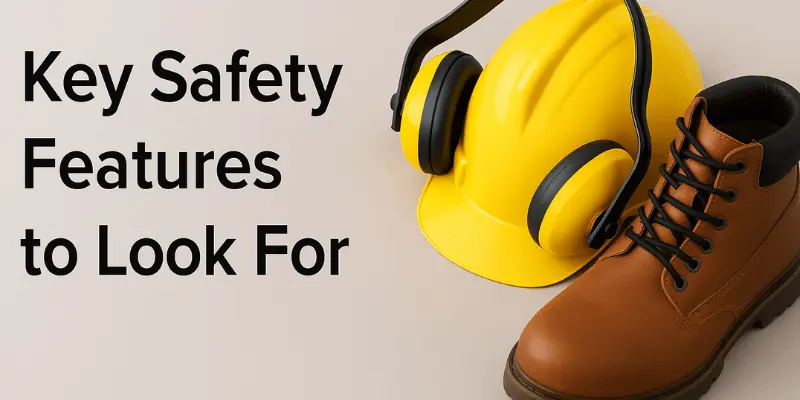
Here are features that improve comfort and fit:
- Wide toe boxes give your toes space to move.
- Cushioned insoles reduce foot pain during long shifts.
- Breathable materials keep your feet dry and cool.
- Padded collars and ankle support help reduce fatigue.
- Lightweight construction makes walking easier over time.
If your job keeps you standing or walking all day, you need the best safety shoes for long shifts. Try different pairs if you must, because every foot is different. A good fit protects more than your toes. It protects your focus, your energy, and your performance from start to finish.
🥇 Best Safety Shoe Brands (With Examples)
When it comes to safety footwear, some brands stand out for good reason. They consistently deliver comfort, protection, and durability. Whether you’re buying your first pair or replacing old work boots, it helps to know which brands get the job done right.
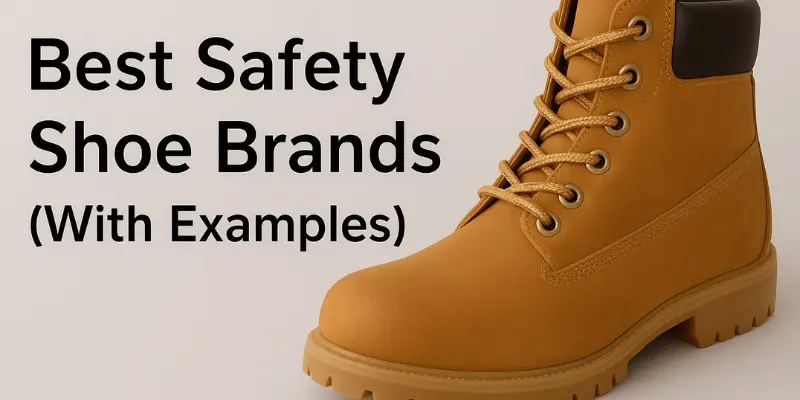
Here are some trusted names to consider:
- Timberland PRO – Known for rugged, long-lasting boots with great toe protection.
- Red Wing – Offers premium-quality safety shoes with a focus on durability and comfort.
- Reebok Work – Combines lightweight, athletic designs with solid composite toe options.
- Caterpillar (CAT) – Delivers heavy-duty protection for construction and industrial use.
- Blundstone – Popular for slip-on work boots with supportive insoles.
Each brand has something different to offer. Think about your job, your environment, and your comfort needs. Choosing a trusted brand helps you get reliable protective footwear that can handle whatever the workday throws at you.
⚠️ Common Mistakes When Buying Safety Shoes
Buying safety shoes might seem easy, but many people get it wrong. A poor choice can leave your feet sore, unprotected, or even injured. Avoid these common mistakes when shopping for your next pair of protective footwear:
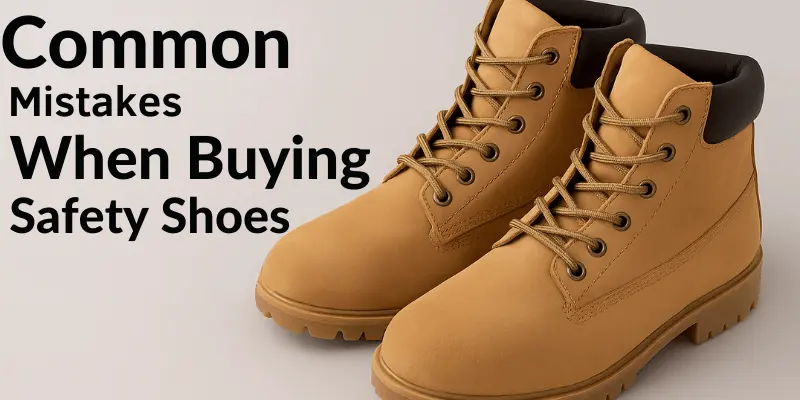
| Mistakes to Avoid |
|---|
|
The best safety shoes protect and support your feet all day. Skipping key features or grabbing the wrong pair can lead to pain or even injury on the job. Choose smart.
🧼 Extra Tips for Long-Term Use
Once you find the right safety shoes, you want them to last. Good maintenance not only keeps them clean but also helps protect their structure and safety features.
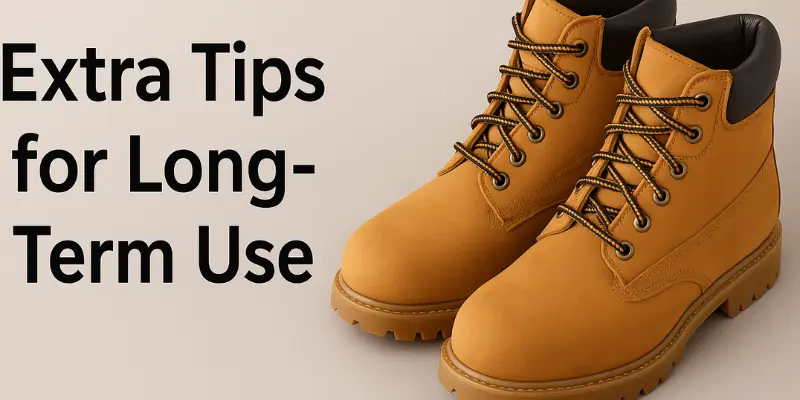
🧽 How to Clean Safety Shoes
- Wipe off dirt and mud daily using a damp cloth.
- For leather work boots, apply a leather conditioner once a week.
- Let the shoes dry naturally. Do not use direct heat..
🧼 How to Store Them Properly
- Keep your protective footwear in a cool, dry place.
- Use a shoe tree or stuff with paper to keep their shape.
⏳ When to Replace Your Safety Shoes
- If the tread is worn flat or slippery.
- If the toe cap shows damage or feels loose.
- If you feel less support than before, even with insoles.
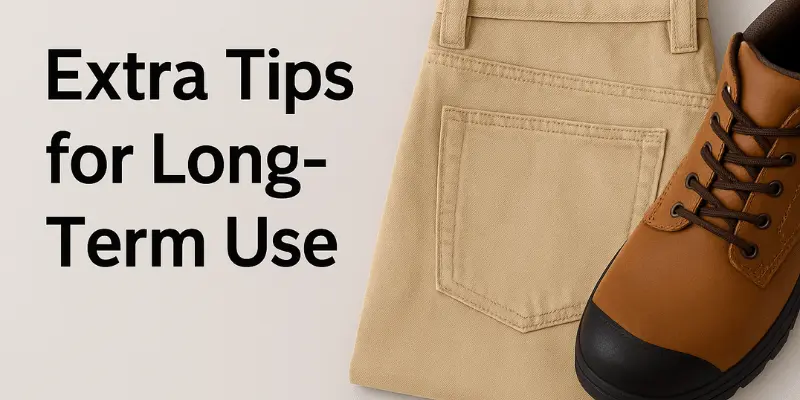
Taking care of your safety shoes extends their life and keeps your feet protected. With a little daily effort, you can get the most out of every pair.
✅ Quick Checklist: What to Look For Before Buying
Before you buy a pair of safety shoes, use this checklist to make sure they match your job, fit your feet, and meet all safety standards. This quick guide helps you avoid common mistakes and find the best safety shoes for your work.
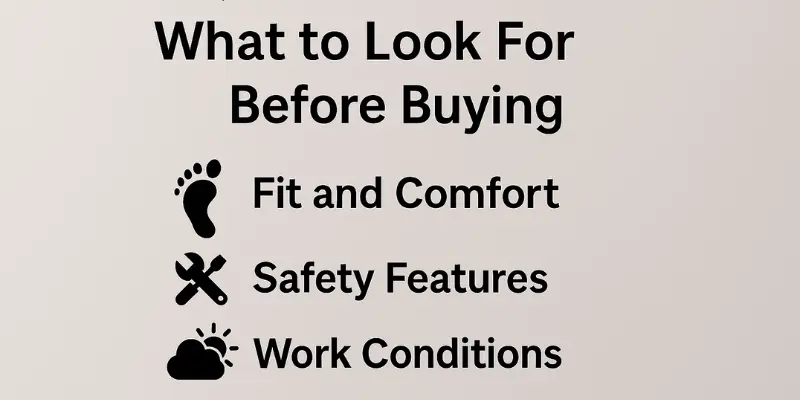
👣 Fit and Comfort
- Do they feel good right away without pinching?
- Is there enough room in the toe box?
- Are they cushioned for long shifts?
🛠️ Safety Features
- Do they have the correct toe cap (steel, composite, or alloy)?
- Are they slip-resistant, puncture-proof, or EH-rated based on your job?
- Do they meet EN ISO 20345 or ASTM F2413 standards?
🌦️ Work Conditions
- Will they hold up in wet, cold, or hot environments?
- Do you need waterproof or breathable materials?
A smart purchase starts with knowing what you need. Use this checklist to feel confident about your next pair of work boots or protective footwear.
🌱 New Trends in Safety Footwear
The world of safety shoes is changing fast. Today’s workers want more than just protection. They want comfort, style, and sustainability. Many of these trends are not yet widely covered by other brands, which gives you a chance to stay ahead.
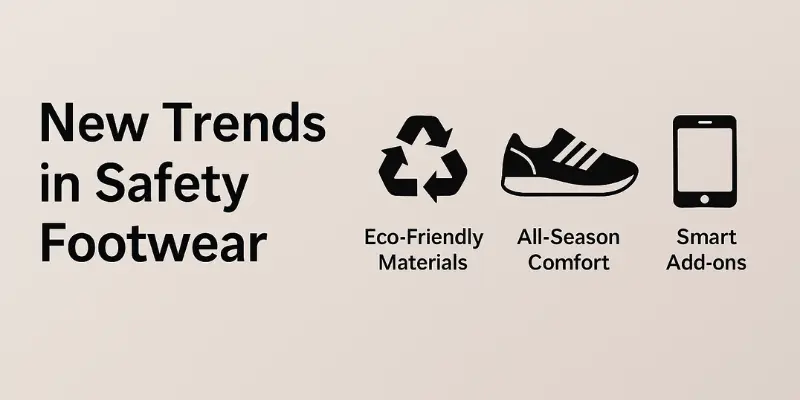
♻️ Eco-Friendly Materials
Some brands now use recycled fabrics and responsibly sourced leather to create work boots that are better for the environment.
👟 Athletic-Inspired Designs
Modern protective footwear looks more like sneakers than traditional boots. This makes them ideal for warehouse, logistics, and indoor work.
🌡️ All-Season Comfort
Shoes with moisture control and insulation help you stay dry in summer and warm in winter. Breathable safety shoes are especially popular in hot climates.
📱 Smart Add-ons
Some high-tech models now include features like shock sensors or QR-coded tags for safety tracking.
These new trends show that safety footwear is evolving. You no longer have to choose between protection and comfort. You can have both.
🧾 Final Thoughts: Which Safety Shoes Are Best for You?
There is no one-size-fits-all answer. The best safety shoes depend on your job, your environment, and how long you stay on your feet each day. What works for a warehouse worker may not suit someone in construction or healthcare.
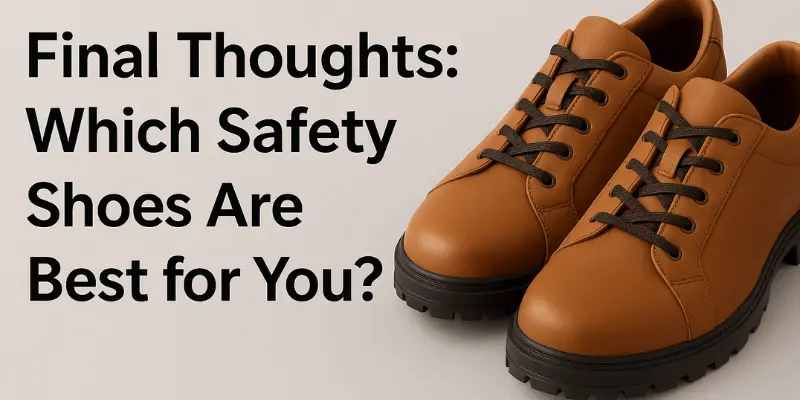
Keep these final points in mind when choosing:
- Match the shoe to your work environment.
- Focus on key safety features like toe protection, slip resistance, and EH ratings.
- Look for trusted brands that offer both protection and comfort.
- Pay attention to certifications such as EN ISO 20345 or ASTM F2413.
- Always try the shoes on before committing, if possible.
Choosing the right pair of protective footwear means fewer injuries, less fatigue, and a better workday. Invest in your feet now so you can stay strong, safe, and supported no matter where your job takes you.
❓ Frequently Asked Questions About Safety Shoes
Steel-toe shoes feature a metal cap for enhanced impact protection. Composite toe options utilize non-metallic materials, such as fiberglass, making them lighter and more metal detector-friendly. Both offer solid safety when certified.
Yes, if the shoes have an EH rating. EH stands for Electrical Hazard. These safety shoes are tested to reduce the risk of electric shock under certain conditions. Always check the label before you buy.
Look for certifications like EN ISO 20345 or ASTM F2413. You will also see codes like S1, S2, or S3, which show what type of protection the shoe offers. Trusted brands will always include this on the label.
Replace your work boots or protective footwear when:
- The outsole is worn down
- The toe cap feels loose or damaged.
- Comfort and support are no longer there.
- Slip resistance has faded.
Even if they look fine, worn shoes may no longer protect your feet.
Yes. Many top brands offer safety shoes made for women and for wider feet. Look for size options marked with wide fit or try on different models to see what works best for your foot shape.

- Be Respectful
- Stay Relevant
- Stay Positive
- True Feedback
- Encourage Discussion
- Avoid Spamming
- No Fake News
- Don't Copy-Paste
- No Personal Attacks



- Be Respectful
- Stay Relevant
- Stay Positive
- True Feedback
- Encourage Discussion
- Avoid Spamming
- No Fake News
- Don't Copy-Paste
- No Personal Attacks


